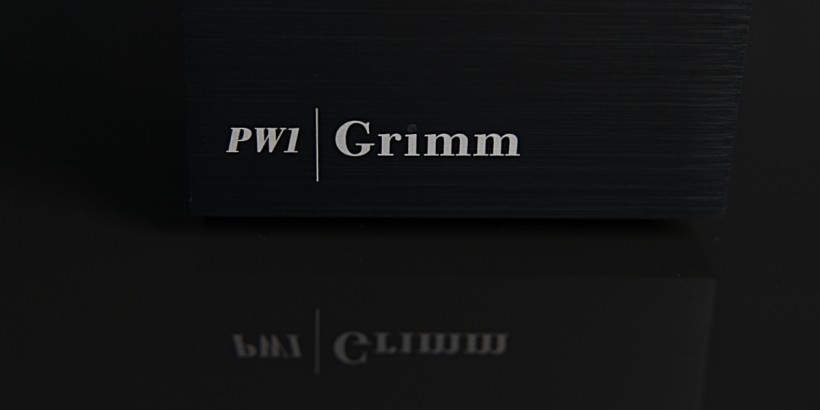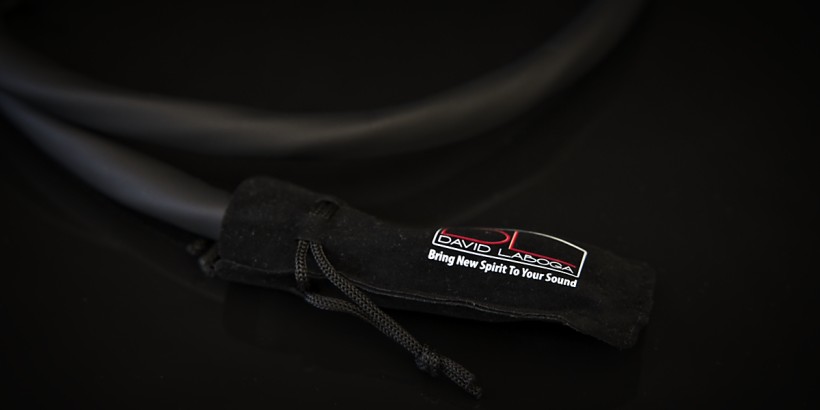Akiko Audio Triple AC Enhancer has been the company’s bestseller ever since its debut in 2014. Seven springs later its fancier version – Akiko Audio Triple AC Evolution – came to be and is on the menu this time around. Enjoy!
Shine
In late 2019 I had the pleasure of sampling one particular product that radically changed my stance on the subject of AC noise, or rather helped me to understand how severe this issue is. It all started with the UK manufacturer Computer Audio Design aka CAD, which is the most known for their 1543 MKII DAC and CAT server/streamer transport for it, so digital stuff all around. However, the company’s founder Scott Berry did a lot to keep these two designs as noise-free as they can, which explains why they’re packed inside non-conductive acrylic enclosures. To investigate how serious the man was on the matter, five years ago he sent my way his Ground Control GC1 and GC3 devices. To recap, these fully passive hefty blocks were made specifically as drains for the AC noise within the 700kHz – 10GHz range and beyond that’s generated by home appliance; TVs, battery chargers, routers, light switches, dimmers and so on so forth. The transient noise they make bleeds into our mains power and earth, and then to our audio systems, where it negatively impacts their noise floor. When that happens, sonics suffer. CAD’s Ground Control GC3 and GC1 models were designed to siphon ultrasonic noise on an audio system’s signal ground and/or mains earth lines, and then convert it into heat inside their acrylic bodies. These black holes for AC pollution proved as effective as they were large and expensive. Very. Back in 2019, the GC3 with the necessary low-impedance umbilical cables wanted about €5’000 and as much rack space as an integrated amp. Then again, this CAD affair was clearly targeted for consumers interested in potent accessories capable of boosting their already locked systems. In other words, such audience wants to extract the very best out of their speakers, amp and source instead of endlessly replacing them and suffering financial losses. In this context, products such as CAD’s ground sorters offer the viable upgrade path instead of being extreme expenses not worth at least checking them out.
CAD’s Ground Control GC3 and GC1 models were designed to siphon ultrasonic noise on an audio system’s signal ground and/or mains earth lines, and then convert it into heat inside their acrylic bodies. These black holes for AC pollution proved as effective as they were large and expensive. Very. Back in 2019, the GC3 with the necessary low-impedance umbilical cables wanted about €5’000 and as much rack space as an integrated amp. Then again, this CAD affair was clearly targeted for consumers interested in potent accessories capable of boosting their already locked systems. In other words, such audience wants to extract the very best out of their speakers, amp and source instead of endlessly replacing them and suffering financial losses. In this context, products such as CAD’s ground sorters offer the viable upgrade path instead of being extreme expenses not worth at least checking them out.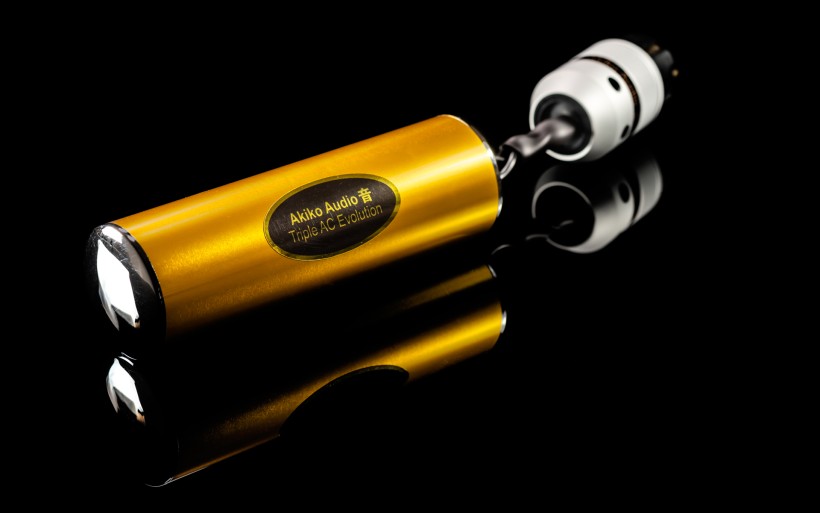 These days specialist noise trimmers for audio purposes make a fairly diversified product group. High-frequency noise rejection is their common ground, but means to achieve this ultimate goal aren’t all the same. The Lithuanian company LessLoss offers intricate C-MARC wiring and passive Firewall filters, all meant for in-line use. CAD’s passive GC range works in parallel to electronics and power veins. Ansuz follows suit with their own passive Tesla coils and active analog dither circuits, both also designed to work in parallel to signal and power to keep the inductance level low. That’s the extent of what I’ve tried in my system. Today this fairly short list grows larger by one manufacturer from The Netherlands – Akiko Audio – whose exposure at Srajan’s site is generous to say the least. I’m merely catching up and happy about that. This Dutch company has been on my radar for a long time.
These days specialist noise trimmers for audio purposes make a fairly diversified product group. High-frequency noise rejection is their common ground, but means to achieve this ultimate goal aren’t all the same. The Lithuanian company LessLoss offers intricate C-MARC wiring and passive Firewall filters, all meant for in-line use. CAD’s passive GC range works in parallel to electronics and power veins. Ansuz follows suit with their own passive Tesla coils and active analog dither circuits, both also designed to work in parallel to signal and power to keep the inductance level low. That’s the extent of what I’ve tried in my system. Today this fairly short list grows larger by one manufacturer from The Netherlands – Akiko Audio – whose exposure at Srajan’s site is generous to say the least. I’m merely catching up and happy about that. This Dutch company has been on my radar for a long time.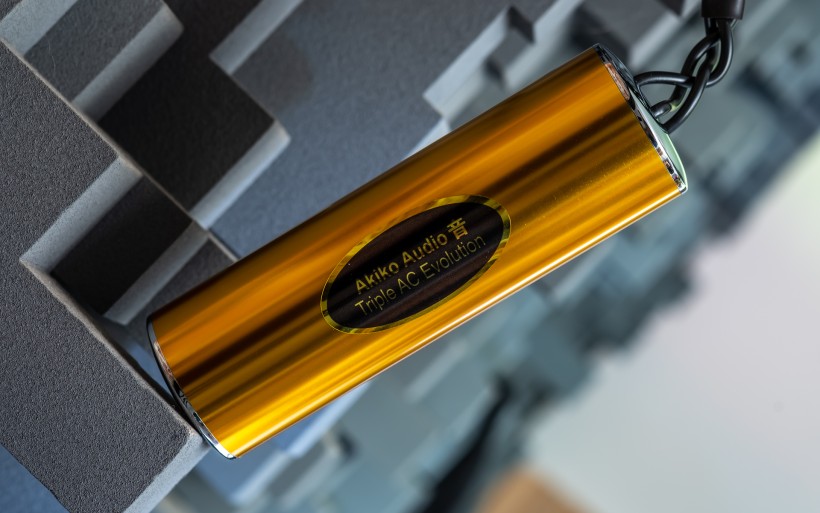 Akiko Audio was founded in 2011 by Marc van Berlo, who for many years was an entrepreneur in the financial sector and one avid audiophile after hours. He also had firm ideas how to use the properties of various minerals and crystals in this hobby. At some point, the decision was made to leave office work in the past and focus on audio, which eventually turned into a full-time job for Marc and his son Sander, who was my contact. Fast forward 13 years and Akiko Audio remains a well-known family business run by two people, while additional staff are employed for production work during busy periods. The company’s roster accurately reflects its specialist profile. It comprises ground conditioners Castello and Minelli, power conditioners Castello Solo and Corelli Corundum, various AC plugs, cables, tuning sticks and discs and many other accessories related either to vibration control or power. Initially I assumed that Akiko’s bestseller had to be one of their conditioners. Not. That place has been taken by their Triple AC Enhancer that had its official debut in 2014. When the Covid 19 hit, Marc and his son had time to apply in this device means successfully used in their Corelli model and thoroughly test the outcome, which had flourished into today’s loaner named Akiko Audio Triple AC Evolution. Should you wonder about the company name, in Japan the word Akiko means brilliant and also is a popular female name there, while the kanji in its logo stands for sound. The result upon combining them is dead obvious.
Akiko Audio was founded in 2011 by Marc van Berlo, who for many years was an entrepreneur in the financial sector and one avid audiophile after hours. He also had firm ideas how to use the properties of various minerals and crystals in this hobby. At some point, the decision was made to leave office work in the past and focus on audio, which eventually turned into a full-time job for Marc and his son Sander, who was my contact. Fast forward 13 years and Akiko Audio remains a well-known family business run by two people, while additional staff are employed for production work during busy periods. The company’s roster accurately reflects its specialist profile. It comprises ground conditioners Castello and Minelli, power conditioners Castello Solo and Corelli Corundum, various AC plugs, cables, tuning sticks and discs and many other accessories related either to vibration control or power. Initially I assumed that Akiko’s bestseller had to be one of their conditioners. Not. That place has been taken by their Triple AC Enhancer that had its official debut in 2014. When the Covid 19 hit, Marc and his son had time to apply in this device means successfully used in their Corelli model and thoroughly test the outcome, which had flourished into today’s loaner named Akiko Audio Triple AC Evolution. Should you wonder about the company name, in Japan the word Akiko means brilliant and also is a popular female name there, while the kanji in its logo stands for sound. The result upon combining them is dead obvious.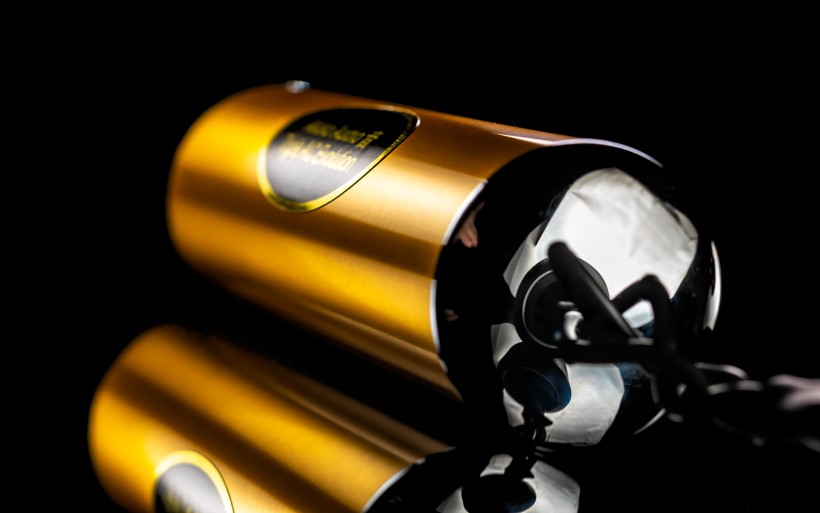 The package from Sander contained a tubular cardboard with the key ingredient surrounded by foamy bits and short manual card. Since this is a plug ‘n’ play device, nothing else was needed and for once I appreciated a really small package. The Triple AC Evolution itself measures 33cm and weighs 700g, so is compact yet surprisingly hefty. A short braid of three cables connects its 16cm-long golden barrel with a Schuko plug and externally that’s all there is to it. This clearly is a handmade boutique effort, albeit put together to high standards; without any glue residue or any other manufacturing imperfections. The view is rather blingy, but the product’s purpose and size hide it from our eyes. This noise suppressor was designed to limit the severity of ultrasonic AC noise transmitted along with the line frequency prior to reaching powered audio components, so its place is somewhere behind an audio rack. It works in parallel to our electronics and connects only to the mains earth, which means that it doesn’t obstruct current flow. This also tells us that the ground plug part of the Triple AC Evolution is where it’s at, polarity doesn’t matter and live and neutral pins remain inactive, which warrants electrical safety. In order to work, the device plugs itself into any spare socket within an audio system or near it, so into a free wall or power distributor outlet.
The package from Sander contained a tubular cardboard with the key ingredient surrounded by foamy bits and short manual card. Since this is a plug ‘n’ play device, nothing else was needed and for once I appreciated a really small package. The Triple AC Evolution itself measures 33cm and weighs 700g, so is compact yet surprisingly hefty. A short braid of three cables connects its 16cm-long golden barrel with a Schuko plug and externally that’s all there is to it. This clearly is a handmade boutique effort, albeit put together to high standards; without any glue residue or any other manufacturing imperfections. The view is rather blingy, but the product’s purpose and size hide it from our eyes. This noise suppressor was designed to limit the severity of ultrasonic AC noise transmitted along with the line frequency prior to reaching powered audio components, so its place is somewhere behind an audio rack. It works in parallel to our electronics and connects only to the mains earth, which means that it doesn’t obstruct current flow. This also tells us that the ground plug part of the Triple AC Evolution is where it’s at, polarity doesn’t matter and live and neutral pins remain inactive, which warrants electrical safety. In order to work, the device plugs itself into any spare socket within an audio system or near it, so into a free wall or power distributor outlet.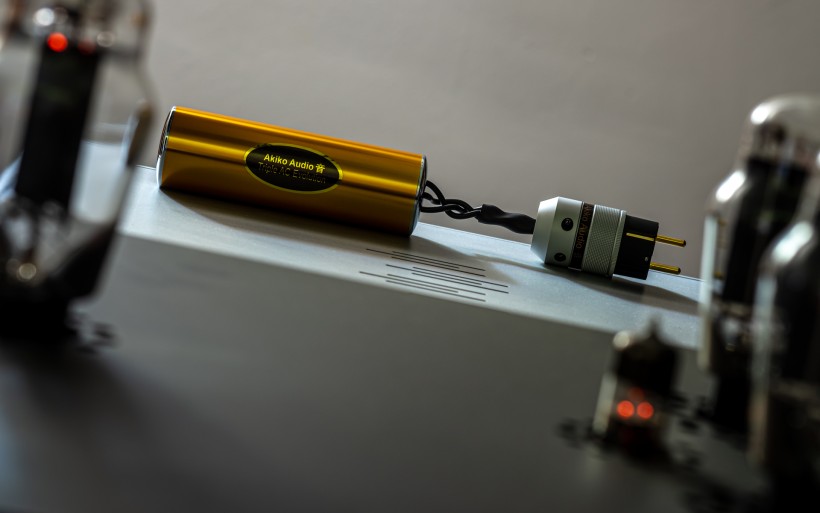 The internals of many noise traps are their makers’ proprietary secret sauce that’s off limits to our eyes by design. Akiko’s Triple AC Evolution isn’t any different, but we have enough info to know the basics. The word triple in today’s name specifies three separate chambers inside their common shiny cylindrical body. Each compartment accommodates one wire and all meet at the plug’s ground lead, through which ultrasonic energies floating on the AC ground are absorbed. Although the exact substance inside Triple AC Evo’s containers remains a mystery, we know that this is a mix based on minerals from the corundum group (red/blue corundum is called ruby/sapphire), so very hard stones (9.0 on the Mohs hardness scale) apparently with properties useful in AC noise absorption and, I’m guessing here, perhaps ground to powder to secure large contact surface with the braided wiring. That’s the concept and elegantly dressed considering how the Evo looks and feels in hand. Now it’s time to plug it in and investigate how it goes about its business.
The internals of many noise traps are their makers’ proprietary secret sauce that’s off limits to our eyes by design. Akiko’s Triple AC Evolution isn’t any different, but we have enough info to know the basics. The word triple in today’s name specifies three separate chambers inside their common shiny cylindrical body. Each compartment accommodates one wire and all meet at the plug’s ground lead, through which ultrasonic energies floating on the AC ground are absorbed. Although the exact substance inside Triple AC Evo’s containers remains a mystery, we know that this is a mix based on minerals from the corundum group (red/blue corundum is called ruby/sapphire), so very hard stones (9.0 on the Mohs hardness scale) apparently with properties useful in AC noise absorption and, I’m guessing here, perhaps ground to powder to secure large contact surface with the braided wiring. That’s the concept and elegantly dressed considering how the Evo looks and feels in hand. Now it’s time to plug it in and investigate how it goes about its business. Prior to doing anything with Triple AC Evolution, I asked my Akiko contact for any use case scenarios other than those I already knew about. Sander explained that the mineral mixture inside the device makes it work by proximity effect, so positioning near a power line without being physically connected to it. Intrigued I had to ask how so and was told that current has many complicated radiation field patterns also in the vicinity of cables and power strips. This report’s ground noise drain has an influence on these fields if it’s close enough. Although it is supposed to do something even when not connected, connect it should to maximize the effect. At my place, one of LessLoss distributor’s free outlets was a good place to start. Sander also informed me that the material inside the Evo needs about a week to stabilize before the first go, so I plugged it into the designated spot within my platform and left it alone there. Then I had a listen. Then it was disconnected. Then I listened again. Rinse and repeat with some 30 minutes of downtime between each back and forth. Conclusions presented themselves fairly quickly and for a good reason.
Prior to doing anything with Triple AC Evolution, I asked my Akiko contact for any use case scenarios other than those I already knew about. Sander explained that the mineral mixture inside the device makes it work by proximity effect, so positioning near a power line without being physically connected to it. Intrigued I had to ask how so and was told that current has many complicated radiation field patterns also in the vicinity of cables and power strips. This report’s ground noise drain has an influence on these fields if it’s close enough. Although it is supposed to do something even when not connected, connect it should to maximize the effect. At my place, one of LessLoss distributor’s free outlets was a good place to start. Sander also informed me that the material inside the Evo needs about a week to stabilize before the first go, so I plugged it into the designated spot within my platform and left it alone there. Then I had a listen. Then it was disconnected. Then I listened again. Rinse and repeat with some 30 minutes of downtime between each back and forth. Conclusions presented themselves fairly quickly and for a good reason.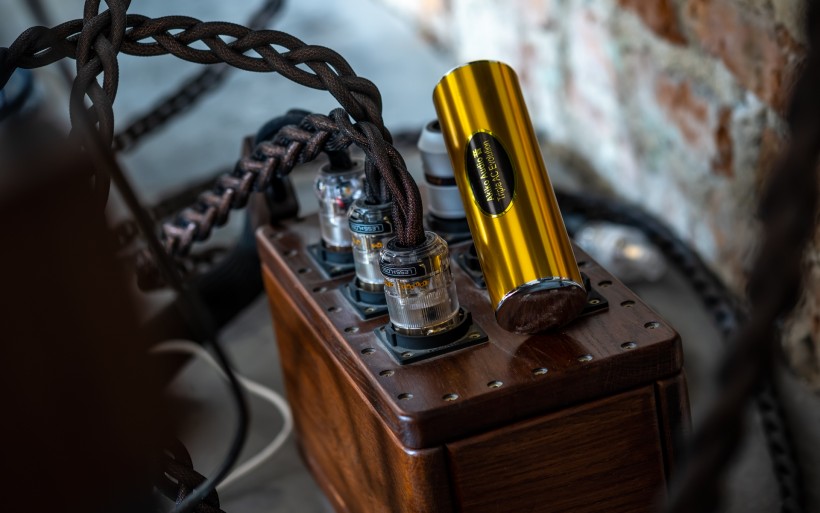 Although this article marks Akiko Audio’s debut here at HFK, let me stress again that their golden Evo specimen isn’t the first such an accessory that I had the pleasure of using. Although their breed incorporates various technologies and physical means, it is very predictable in action. Audio signal stripped from noise sounds in a particular way, which trained ears will recognize in a heartbeat and without fail. The key differences are in the price of a noise trimmer and extent of such service, as in, how much of an audible impact it makes. As far as price tags go, well, Triple AC Evolution is the most affordable among its noise-killing kind I’ve guested to date. Its position significantly below Ansuz TC3, CAD CG1 and LessLoss power C-MARCs and Firewalls 640x is a large part of its appeal. To get the basics out of the way, in my LessLoss C-MARC Stellar review I wrote that: “High-frequency noise isn’t a mere background buzz we hear on speakers. It manifests itself as audible sluggishness, strong coloration, shaky bass, bloated spatial outlines, harshness, brittleness, pointiness, artificial textures and subsequently their poor pigmentation. Listening fatigue follows and so does sound that largely feels off. The sensation is comparable to auditioning a tubed system for the first time after several weeks of break. When these unpleasant effects are reduced to a point when they’re no longer bothersome, the asset list as above is what’s left. To simplify, noise masks details in music and its tangible organic character. Remove the culprit and presto, higher informational content, prettiness and vivaciousness resurface to positively influence the entire perspective. These seemingly mutually exclusive things can really go hand in hand.”
Although this article marks Akiko Audio’s debut here at HFK, let me stress again that their golden Evo specimen isn’t the first such an accessory that I had the pleasure of using. Although their breed incorporates various technologies and physical means, it is very predictable in action. Audio signal stripped from noise sounds in a particular way, which trained ears will recognize in a heartbeat and without fail. The key differences are in the price of a noise trimmer and extent of such service, as in, how much of an audible impact it makes. As far as price tags go, well, Triple AC Evolution is the most affordable among its noise-killing kind I’ve guested to date. Its position significantly below Ansuz TC3, CAD CG1 and LessLoss power C-MARCs and Firewalls 640x is a large part of its appeal. To get the basics out of the way, in my LessLoss C-MARC Stellar review I wrote that: “High-frequency noise isn’t a mere background buzz we hear on speakers. It manifests itself as audible sluggishness, strong coloration, shaky bass, bloated spatial outlines, harshness, brittleness, pointiness, artificial textures and subsequently their poor pigmentation. Listening fatigue follows and so does sound that largely feels off. The sensation is comparable to auditioning a tubed system for the first time after several weeks of break. When these unpleasant effects are reduced to a point when they’re no longer bothersome, the asset list as above is what’s left. To simplify, noise masks details in music and its tangible organic character. Remove the culprit and presto, higher informational content, prettiness and vivaciousness resurface to positively influence the entire perspective. These seemingly mutually exclusive things can really go hand in hand.”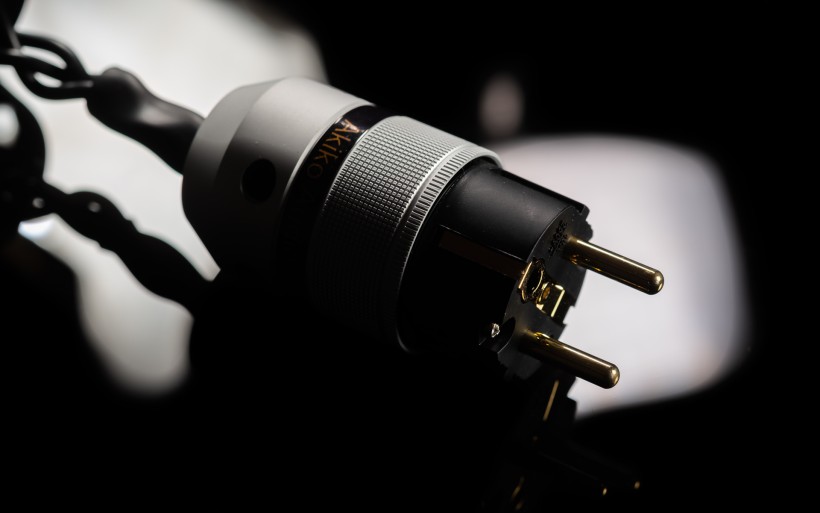 As far as this report’s subject is concerned, the above fully applies and makes it a full-fledged noise banisher no less. Should you put any trust into what I hear, the Evo behaves exactly as advertised. Manufacturer descriptions of many audio products are often packed with meaningless phrases. Here the Dutchies were spot on consequential and accurate. On that note, let’s break down the on-site list of expected improvements upon using their golden trooper. Less background noise means more pristine backdrop for all sound sources. This audiophile blackness upon which everything flourishes has the effect of expanding dynamic headroom, turning up contrast ratio and increasing resolution naturally, so without any tricks which involve elevated brilliance region. The Evo’s ability to lessen background noise is in fact its key attractor that allows other traits to follow. Moving on, more natural music and lesser listening fatigue are the result of removing audible harshness, grit and pointiness. Noise killers are known for this and my sense of hearing tells me that so is the Evo. Then we have the increase in spaciousness and more perceivable tiny dust particles floating in the air. Noise steals away from ambience, oxygenation and resolution. When its slider goes lower, the sensation of greater aural liberation and clarity hike follow. My speakers are hardly stuffy, blurry or unclear. My system already accommodates numerous devices and cables designed to do what the Evo does in the sense of its perceived input. However, the audible action of all this accessory breed compounds and it seems that there’s no end to that. Well, at least I haven’t yet reached the ceiling on this score, which is why I wasn’t any surprised upon hearing the Akiko’s clear contribution atop all its other noise-rejecting neighbours in my platform. To my knowledge and experience that’s how it’s supposed to be.
As far as this report’s subject is concerned, the above fully applies and makes it a full-fledged noise banisher no less. Should you put any trust into what I hear, the Evo behaves exactly as advertised. Manufacturer descriptions of many audio products are often packed with meaningless phrases. Here the Dutchies were spot on consequential and accurate. On that note, let’s break down the on-site list of expected improvements upon using their golden trooper. Less background noise means more pristine backdrop for all sound sources. This audiophile blackness upon which everything flourishes has the effect of expanding dynamic headroom, turning up contrast ratio and increasing resolution naturally, so without any tricks which involve elevated brilliance region. The Evo’s ability to lessen background noise is in fact its key attractor that allows other traits to follow. Moving on, more natural music and lesser listening fatigue are the result of removing audible harshness, grit and pointiness. Noise killers are known for this and my sense of hearing tells me that so is the Evo. Then we have the increase in spaciousness and more perceivable tiny dust particles floating in the air. Noise steals away from ambience, oxygenation and resolution. When its slider goes lower, the sensation of greater aural liberation and clarity hike follow. My speakers are hardly stuffy, blurry or unclear. My system already accommodates numerous devices and cables designed to do what the Evo does in the sense of its perceived input. However, the audible action of all this accessory breed compounds and it seems that there’s no end to that. Well, at least I haven’t yet reached the ceiling on this score, which is why I wasn’t any surprised upon hearing the Akiko’s clear contribution atop all its other noise-rejecting neighbours in my platform. To my knowledge and experience that’s how it’s supposed to be. The Evo’s improvement list also mentions bass that’s more natural and easier to follow. Although I agree, here I have some observations of my own. Upon using this device, bass gets a touch rounder and more anchored, but also more packed with color and composed, so in a way more intense. All in all, with the Evo each individual bass pulse trades in blurry outlines and any residual shakiness for gains on definition, which makes these hits easier to follow indeed. Positive changes all around. The Dutch will also make poorly recorded tracks a bit more digestible, particularly less sibilant, but that’s in the product description too and hardly a shocker. Intrusive ‘s’ sounds are partly the effect of a recording quality and partly noise. Although we can’t change the former, the Evo is a fitting tool for addressing the latter and reaping the audible benefits. Just to be clear, a single Dutch unit won’t make sibilants go away completely, but it will decrease their severity. The last line to discuss from the Evo’s on-site profile tackles clean and honest sound that’s immediately audible and not subtle. Backdrop blackness translates into lower noise floor so higher cleanliness, simple stuff. Honesty in the context of the Dutch’s behavior means that it doesn’t alter tonal balance in any radical way. I can easily agree with that, albeit with a small caveat.
The Evo’s improvement list also mentions bass that’s more natural and easier to follow. Although I agree, here I have some observations of my own. Upon using this device, bass gets a touch rounder and more anchored, but also more packed with color and composed, so in a way more intense. All in all, with the Evo each individual bass pulse trades in blurry outlines and any residual shakiness for gains on definition, which makes these hits easier to follow indeed. Positive changes all around. The Dutch will also make poorly recorded tracks a bit more digestible, particularly less sibilant, but that’s in the product description too and hardly a shocker. Intrusive ‘s’ sounds are partly the effect of a recording quality and partly noise. Although we can’t change the former, the Evo is a fitting tool for addressing the latter and reaping the audible benefits. Just to be clear, a single Dutch unit won’t make sibilants go away completely, but it will decrease their severity. The last line to discuss from the Evo’s on-site profile tackles clean and honest sound that’s immediately audible and not subtle. Backdrop blackness translates into lower noise floor so higher cleanliness, simple stuff. Honesty in the context of the Dutch’s behavior means that it doesn’t alter tonal balance in any radical way. I can easily agree with that, albeit with a small caveat.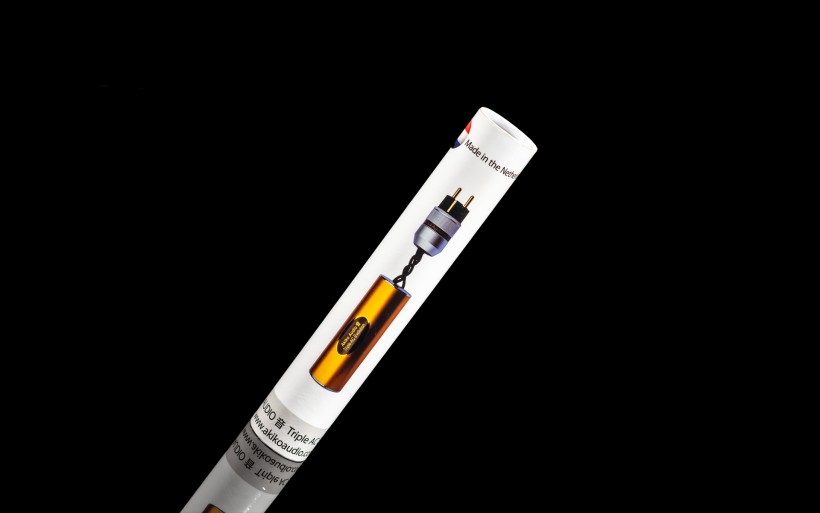 It’s only natural that if we’re accustomed to audible roughness, spikiness, glare and matte color without even knowing that they’re there, this is our reference of natural. The Evo and other similarly profiled accessories make sound a touch juicier, darker, warmer, grounded and heftier, which at first may be taken as tonal makeover. It is not. By stripping the excess noise, this product group simply allows powered audio electronics to perform in fashion that previously was largely off the table. These are performance enablers, not makeup artists. This is why listeners on high dosages of edge, bite and sparks may initially find Evo’s contribution counterproductive. To my ears and taste however it’s the other way around. Upon using it I detect only meaningful gains on most relevant fronts and that’s good enough for me. After all, music is supposed to please and relax, not cause fatigue. This is what today’s affair helps to achieve. It works as intended and advertised, and its presence in my system registered. That’s the takeaway. As expected, on the sheer efficacy scale the Evo’s input remained in the subtle realm way outside audibly drastic changes. For that to happen I’d most likely have to use several these golden barrels at once in my power line’s every free socket, which I think may be possible considering what a single such unit did already, and that its breed’s effectiveness inherently adds up. Let’s wrap.
It’s only natural that if we’re accustomed to audible roughness, spikiness, glare and matte color without even knowing that they’re there, this is our reference of natural. The Evo and other similarly profiled accessories make sound a touch juicier, darker, warmer, grounded and heftier, which at first may be taken as tonal makeover. It is not. By stripping the excess noise, this product group simply allows powered audio electronics to perform in fashion that previously was largely off the table. These are performance enablers, not makeup artists. This is why listeners on high dosages of edge, bite and sparks may initially find Evo’s contribution counterproductive. To my ears and taste however it’s the other way around. Upon using it I detect only meaningful gains on most relevant fronts and that’s good enough for me. After all, music is supposed to please and relax, not cause fatigue. This is what today’s affair helps to achieve. It works as intended and advertised, and its presence in my system registered. That’s the takeaway. As expected, on the sheer efficacy scale the Evo’s input remained in the subtle realm way outside audibly drastic changes. For that to happen I’d most likely have to use several these golden barrels at once in my power line’s every free socket, which I think may be possible considering what a single such unit did already, and that its breed’s effectiveness inherently adds up. Let’s wrap.
I often say that accessories shouldn’t be addressed until all the key components of our audio systems are sorted. Although I still stand by it, Akiko Audio Triple AC Evolution sells for far less than any other noise buster that I’ve sampled. Audibly efficacious and reasonably priced, it caters to cost-effective systems which won’t ever accommodate the industry’s noise-killing big guns. That’s why I see this golden booster as the ideal proposition for folks curious to investigate its kind without sweating the expense or risking mismatch. Meanwhile, the Evo’s meaningful impact on my not exactly affordable rig proved to be the tasty cherry on top and personal highlight. Guilty pleasures and all that. We all deserve ‘em from time to time, don’t we?
Associated Equipment:
- Amplifier: Trilogy 995R, FirstWatt F7, Enleum AMP-23R
- DAC: LampizatOr Pacific (KR Audio T-100 / Living Voice 300B + KR Audio 5U4G Ltd. Ed.)
- Speakers: Boenicke Audio W11 SE+, sound|kaos Vox 3afw
- Transport: Innuos Statement, fidata HFAS1-S10U
- Preamplifier: Trilogy 915R, Thöress DFP
- Speaker cables: Boenicke Audio S3, LessLoss C-MARC
- Headphones: HifiMan Susvara
- Speaker signal conditioning: LessLoss Firewall for Loudspeakers, Boenicke ComDev
- Anti-vibration conditioning: 6x Carbide Base Diamond (under speakers), 6x Carbide Base Micro Diamond with TwinDamp inserts and spikes (under DAC and pre)
- Interconnects: LessLoss Entropic Process C-MARC, Boenicke Audio IC3 CG
- Power components: Gigawatt PC-3 SE EVO+/LC-3 EVO, LessLoss C-MARC, LessLoss Entropic Process C-MARC, LessLoss Entropic Process C-MARC Stellar, Boenicke Audio Power Gate, ISOL-8 Prometheus
- USB components: iFi audio Mercury3.0
- Rack: Franc Audio Accesories Wood Block Rack 1+3
- Network: Fidelizer EtherStream, Linksys WRT160N
- Music: NativeDSD
Retail prices of reviewed components in EU (incl. VAT):
- Akiko Audio Triple AC Evolution: €450
Manufacturer: Akiko Audio






















